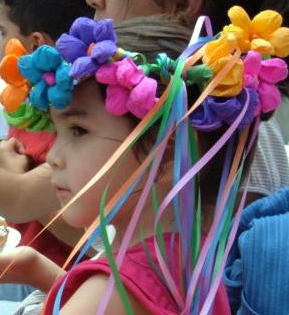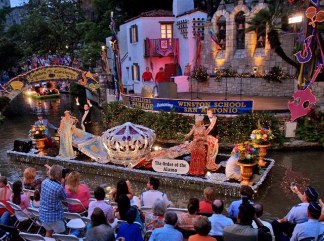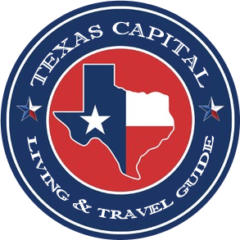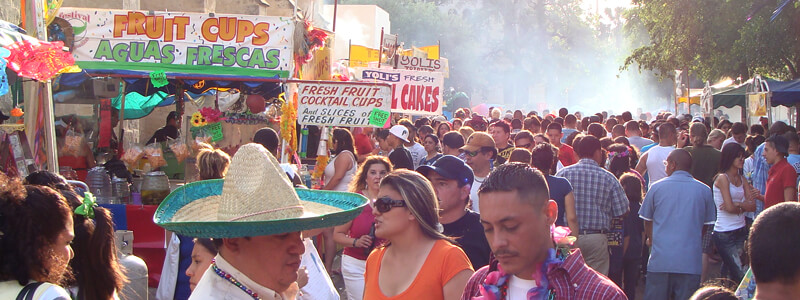Fiesta Days San Antonio
Contents
In 1891, a group of ladies decorated horse-drawn carriages, paraded in front of the Alamo, and pelted each other with flower blossoms. The parade was organized to honor the heroes from the battles of the Alamo and San Jacinto. Little did they know, 118 years later, Fiesta San Antonio would be one of the largest and greatest festivals in America.
 Eleven days, 108 events, 101 local nonprofit member organizations, Up to 3.5 million attending, $284 million economic impact — this is the modern day Fiesta San Antonio, considered by many to be one of two great American celebrations. (The other would be Mardi Gras in New Orleans.)
Eleven days, 108 events, 101 local nonprofit member organizations, Up to 3.5 million attending, $284 million economic impact — this is the modern day Fiesta San Antonio, considered by many to be one of two great American celebrations. (The other would be Mardi Gras in New Orleans.)
Fiesta San Antonio! As every Texan knows, Fiesta in San Antonio is one big party. Folks travel from all across Texas, the U.S., and even from around the world to participate in this time-honored tradition. When William Barret Travis, Jim Bowie, Davy Crockett and the other 180-plus defenders took to the walls of the Alamo to protect San Antonio and to claim her independence as part of the newly formed Texas Republic, no one thought about a future celebration that would honor that event. Yet Fiesta has long been the ultimate tribute to the Alamo heroes – a festival as rich in culture as it is a memorial to the Alamo’s fallen defenders. In modern times, Fiesta San Antonio is considered one of largest and most colorful celebrations in North America.
 When it comes to Fiesta, there is so much to talk about: The hundreds of colorful events, the many parades and pageants and a host of related activities that are associated with the eleven day celebration. But how much do you really know about Fiesta, how it started and the story behind the festival?
When it comes to Fiesta, there is so much to talk about: The hundreds of colorful events, the many parades and pageants and a host of related activities that are associated with the eleven day celebration. But how much do you really know about Fiesta, how it started and the story behind the festival?
Again, we don’t have the space to cover them all. But here are a few Fiesta facts perhaps you didn’t know – or have forgotten:
HISTORY OF THE BATTLE OF FLOWERS PARADE
By 1890, San Antonio, Texas, was a thriving trade center with population of 38,000. In 1891 a group of citizens decided to honor the heroes of the Alamo and Battle of San Jacinto with a Battle of Flowers.
The first parade had horse-drawn carriages, bicycles decorated with fresh flowers and floats carrying children dressed as flowers. The Belknap Rifles represented the military. The participants pelted each other with blossoms.
The Battle of Flowers Parade is the only one in the country to be planned and directed completely by women. Today it’s the largest parade in Fiesta. It’s second in size nationally only to the Tournament of Roses Parade.
THE FIESTA RIVER PARADE
For years King Antonio had no set tradition for his official arrival at Fiesta. He used planes, trains and automobiles. When the Works Progress Administration completed improvements to the San Antonio River in 1941, the Cavaliers decided to introduce the king in a river parade—the first event to take place on the river after the improvements.
Today the River Parade is one of the few in the nation in which the floats really do float. About 250,000 people line the banks to enjoy the event.
FIESTA FLAMBEAU PARADE
The Fiesta Flambeau Parade began in 1948. The parade’s name comes from the French word for a candlestick or torch. In the event’s early years, four-man brigades marched between the other units, carrying torches on five-foot poles. Today Boy Scouts carry safety flares. All the floats in the Flambeau Parade are lighted.
Fiesta San Antonio is being held this year all across San Antonio April 16-26. Don’t miss it.

